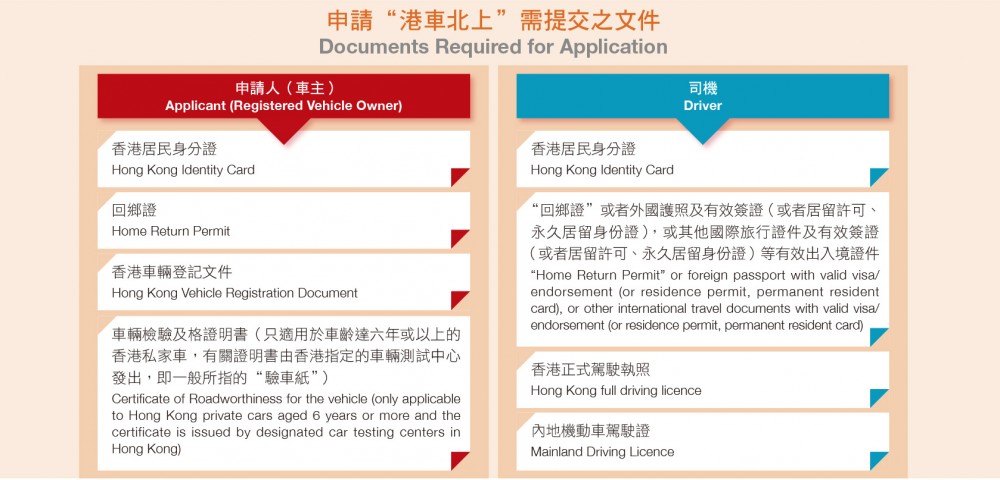Recent implementation of the “Northbound Travel for Hong Kong Vehicles” Scheme (the “Scheme”) is expected to benefit 450,000 eligible locally registered private cars. Car owners are reminded to find out all details before making cross-border journeys, such as insurance, mainland driving rules, applicable laws and regulations, and vehicle inspection arrangements.
Chan Pui-leung
Motorists Should Familiarize Themselves with Insurance Arrangements for the Scheme
The Scheme has enhanced arrangements for driving to the Mainland by streamlining application procedures and lowering charges, making it much more attractive to car owners.  The Guangdong and Hong Kong governments began accepting applications from eligible Hong Kong private cars in June, and from 1 July eligible Hong Kong car owners can travel between Hong Kong and Guangdong via the Hong Kong-Zhuhai-Macao Bridge (HZMB) for business, visiting family members or sightseeing without the need to obtain regular quotas. Their vehicles can remain in Mainland continuously for a maximum of 30 days each time and not more than 180 days per year.
The Guangdong and Hong Kong governments began accepting applications from eligible Hong Kong private cars in June, and from 1 July eligible Hong Kong car owners can travel between Hong Kong and Guangdong via the Hong Kong-Zhuhai-Macao Bridge (HZMB) for business, visiting family members or sightseeing without the need to obtain regular quotas. Their vehicles can remain in Mainland continuously for a maximum of 30 days each time and not more than 180 days per year.
Chan Pui-leung, the Chamber's Committee Member, Member of the Legislative Council and General Manager of China Taiping Insurance (HK) Company Limited, believes the Scheme can fully exploit the potential of HZMB as well as help build connectivity between cities in the Guangdong-Hong Kong-Macao Greater Bay Area. It is expected to benefit 450,000 eligible private cars in Hong Kong. He also pointed out that there will be a cap for the number of applications in the initial stage to ensure smooth operation.
“Unilateral recognition” policy makes car insurance a breeze
Given the different legal systems of Guangdong and Hong Kong, Hong Kong private cars traveling north had to take out the “Compulsory Traffic Accident Liability Insurance for Motor Vehicles” with a mainland insurance company in the past. To make it more convenient for applicants of the Scheme, the Guangdong and Hong Kong governments introduced the “unilateral recognition” policy earlier, which allows Hong Kong private cars to extend the liability coverage of the policy taken out from a local insurance company to include third party risks insurance for the Mainland. In effect, the insured has satisfied the requirement for the “Compulsory Traffic Accident Liability Insurance for Motor Vehicles”.
To make it more convenient for applicants of the Scheme, the Guangdong and Hong Kong governments introduced the “unilateral recognition” policy earlier, which allows Hong Kong private cars to extend the liability coverage of the policy taken out from a local insurance company to include third party risks insurance for the Mainland. In effect, the insured has satisfied the requirement for the “Compulsory Traffic Accident Liability Insurance for Motor Vehicles”.
“Currently, ‘unilateral recognition' insurance policies are available at 16 local insurance companies, which is believed to be adequate for all eligible private cars in Hong Kong.” However, Chan reminded drivers that the minimum sum insured for this type of policy is HKD200,000, comprising HKD180,000 of personal injury coverage, HKD18,000 of medical expenses and HKD2,000 of third party property protection. In the unfortunate event of a serious traffic accident, the compensation amount may exceed the sum insured. He suggests car owners take out an additional commercial insurance policy to bring the total sum insured to HKD2-10 million for more comprehensive protection.
In particular, Chan pointed out that, since this type of policy covers traffic accidents within Guangdong province that involve the insured vehicle, when the insured concerned is a Hong Kong citizen and he/she decides to make a claim or commence proceedings after returning to Hong Kong, it would not be an insured event under the policy.
The Scheme advances Greater Bay Area integration
At this initial stage, HZMB is the only northbound route for the Scheme. Chan expects to see new arrangements in the future that extend coverage to a land boundary control point between Shenzhen and Hong Kong. According to his estimate, the Scheme can generate at least HKD90 million of insurance revenue to drive and benefit the insurance sector. Insurers should note the need to set up insurance after-sale service centers in Qianhai, Hengqin or Nansha in the future. These outlets are perfect demonstration pilots for connectivity between the Guangdong and Hong Kong insurance sectors.
Ringo Lee
The Scheme is Great News to the Hong Kong Public
Ringo Lee, President of the Hong Kong Automobile Association, China (HKAA),  described the Scheme as a great piece of news to the Hong Kong public. It accelerates the integration and exchange between all Greater Bay Area communities and application procedures have been simplified. “Applicants are required to submit relevant supporting documents (see table below). Owners of Hong Kong private cars which are aged less than 6 years should submit documents step by step and apply for a Mainland temporary vehicle licence. If you have made an appointment for cross-border vehicle inspection, you should have your car inspected at the CCIC inspection center in Yuen Long, which is the only authorized service provider for the Scheme.”
described the Scheme as a great piece of news to the Hong Kong public. It accelerates the integration and exchange between all Greater Bay Area communities and application procedures have been simplified. “Applicants are required to submit relevant supporting documents (see table below). Owners of Hong Kong private cars which are aged less than 6 years should submit documents step by step and apply for a Mainland temporary vehicle licence. If you have made an appointment for cross-border vehicle inspection, you should have your car inspected at the CCIC inspection center in Yuen Long, which is the only authorized service provider for the Scheme.”
To increase overall inspection capacity, CCIC has set up a second vehicle inspection center to meet service demand for the Scheme. The center has an estimated capacity of inspecting over 200,000 vehicles annually. Lee pointed out that CCIC reminds car owners to note whether the car paintwork matches the colour at registration, whereas some luxury car models with extra thick windscreens may not be compatible with electronic tags. Issues like these should be taken into account.
Intensive driving course for the Scheme
Recognizing that driving habits and regulations are different in the Mainland and Hong Kong, Lee says HKAA is introducing a “Northbound Travel for Hong Kong Vehicles” driving course.  “The course offers two-hour sessions taught by seasoned driving instructors. Hong Kong car owners or drivers can familiarize themselves with immigration and departure procedures at the port as well as the similarities and differences between driving in the Mainland and Hong Kong.”
“The course offers two-hour sessions taught by seasoned driving instructors. Hong Kong car owners or drivers can familiarize themselves with immigration and departure procedures at the port as well as the similarities and differences between driving in the Mainland and Hong Kong.”
Lee also mentioned that HKAA has launched the “Performance Motors” mobile app, which can be accessed in Guangdong. Car owners can download the free app to get one-stop driving information, such as self-drive application guide, vehicle repair and maintenance, and details of HKAA's service points in Zhuhai.
Make good preparations to enjoy the pleasure of cross-border driving
Lee reminded drivers that under the Scheme vehicles can remain in the Mainland continuously for a maximum of 30 days each time and not more than 180 days per year. Over-stay may result in fines. Moreover, driving guidelines and habits are quite different on two sides of the border. Apart from the obvious left-hand and right-hand drive issue, drivers should remember that vehicles can make right turns at red lights when it is safe to do so. Speed limits on highways are also different and most Mainland roads are digitally monitored so drivers may not be aware that they have committed a traffic offence. Lee suggested both novice and experienced drivers be extra careful when driving on the Mainland and pay attention to local traffic regulations.
Lee said the “Northbound Travel for Hong Kong Vehicles” policy has received very positive response. The Scheme gives scope to collaboration between policy bureaus and duly addresses the need of the public.





